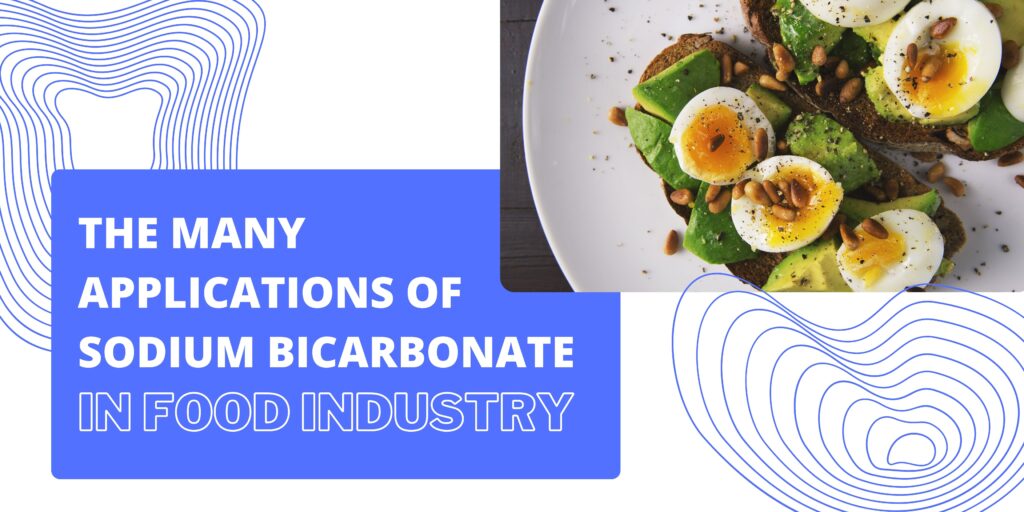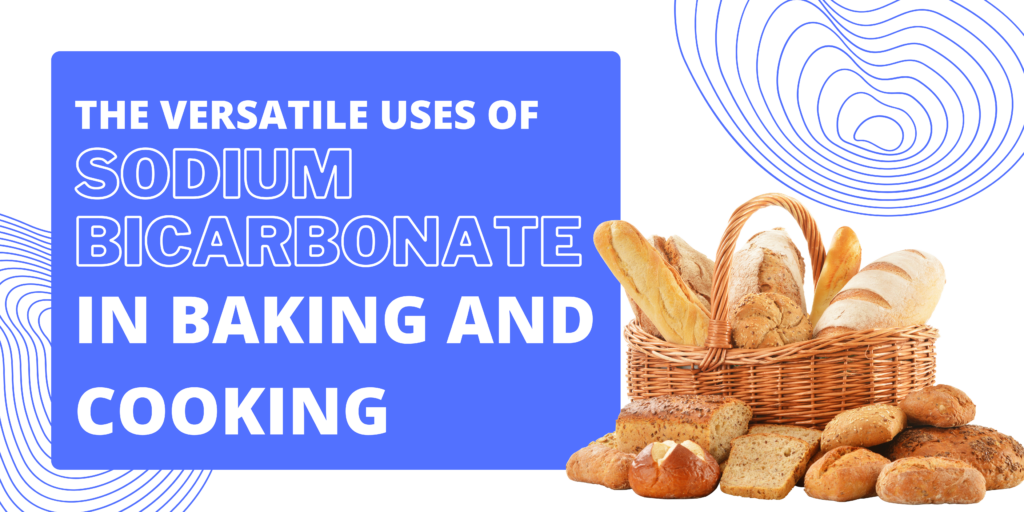
Sodium bicarbonate, generally known as baking soda, is a multipurpose and conventional household component with a wide range of applications in both baking and other culinary preparations. In addition to its leavening properties in the production of light and airy baked goods, sodium bicarbonate performs a range of functions in the kitchen, including tenderizing meat, improving flavors, and managing pH levels throughout culinary processes. In this article, we look at the qualities of sodium bicarbonate, as well as some of the ways it is employed in preparing dishes, and how it has an impact on the food industry.
Properties of Food Grade Sodium Bicarbonate
Food-grade sodium bicarbonate, recognized as safe for consumption, possesses several key properties that make it indispensable in cooking and food preparation:
- Alkalinity: Sodium bicarbonate is an alkaline compound, which means it has a pH greater than 7. This property allows it to neutralize acids, making it a versatile tool for managing the acidity of various ingredients in recipes.
- Leavening Agent: When exposed to acids and heat, sodium bicarbonate produces carbon dioxide gas, causing dough or batter to rise. This is crucial in baking, giving the desired fluffiness and texture to various baked goods.
- Solubility: Sodium bicarbonate is extremely soluble in water, making it simple to incorporate into a variety of recipes and guaranteeing a uniform distribution throughout the mixture.
- Crystalline Structure: Sodium bicarbonate’s crystal structure gives baked goods the correct crumb structure and contributes to their texture and appearance.
- Mild Salty Taste: Sodium bicarbonate has a moderately salty flavor that can improve and complement the flavors of some foods without dominating the other ingredients.
Composition of Sodium Bicarbonate
The ingredients that make up sodium bicarbonate, or NaHCO3, are as follows:
- Sodium (Na): The sodium ion is a vital nutrient for human health and plays a significant function in the electrolyte balance of the body.
- Hydrogen (H): The hydrogen ion is essential to the compound’s reactivity in many culinary procedures as well as its alkaline qualities.
- Carbon (C): In the chemical structure of sodium bicarbonate, the carbon atom is a key component.
- Oxygen (O): Oxygen atoms join with carbon, hydrogen, and sodium to create bonds that add to the molecule’s overall structure.
To fully utilize the culinary potential of food-grade sodium bicarbonate, it is crucial to comprehend its composition and qualities.
Sodium Bicarbonate Applications in Food
Leavening Agent in Baking
The role of sodium bicarbonate as a leavening agent is one of the most well-known uses of the ingredient in baking. Sodium bicarbonate releases carbon dioxide gas when mixed with an acid (such as vinegar, lemon juice, or yogurt), causing the dough or batter to rise and giving baked goods like cakes, muffins, and bread a light, fluffy texture.
Tenderizing Meat
Sodium bicarbonate’s alkaline characteristics allow it to be used as a meat tenderizer. When used on meat, it aids in the breakdown of proteins, softening and tenderizing the meat. This method, which is frequently employed in marinating or brining procedures, is particularly useful for harder types of meat.
Flavor Enhancer
By balancing acidic or sour qualities, sodium bicarbonate can improve the flavor of some meals. To balance flavors and lessen tartness, it can be added in recipes that call for acidic components like tomatoes. When added in moderate amounts, it can also give coffee a gentler, less bitter flavor.
Deodorizing and Cleansing
Sodium bicarbonate is a potent natural deodorizer and cleaner in the kitchen. It can be used to get rid of smells from garbage disposals, refrigerators, and dishwashers. By eliminating pesticides and contaminants, it can also help clean fruits and vegetables.
Acid-Base Balancer
Sodium bicarbonate is an effective acid-base balancer in cooking. It can be used to neutralize excess acidity in dishes, such as overly acidic sauces or soups. This property helps achieve the desired taste and balance in various culinary creations.
Dough Relaxer
By acting as a dough relaxer during the kneading process, sodium bicarbonate can keep the dough from becoming hard and difficult to handle. It contributes to the dough’s continued flexibility, making it softer and more malleable for a variety of baked items.
Food Preservative
Sodium bicarbonate can be utilized as a natural food preservative to extend the shelf life of perishable items. By reducing the growth of microorganisms, it helps prevent spoilage and maintain the quality of food products.
Fruit and Vegetable Wash
Sodium bicarbonate can be used to efficiently wash fruits and vegetables when mixed with water. To make sure the food is clean and safe for consumption, it helps remove dirt, pesticides, and other impurities.
Enhancing Crispy Texture
Sodium bicarbonate can improve the crispy texture of fried dishes in some recipes. This is accomplished by encouraging quicker evaporation of moisture during cooking, giving the food a crispier exterior.
Inhibiting Browning
Foods like apples, potatoes, and other fruits and vegetables can all benefit from sodium bicarbonate’s ability to slow down the browning process. This characteristic aids in preserving the dish’s aesthetic value for a longer time.
Alkaline Water
The health benefits of water can be increased by adding sodium bicarbonate to alkalize it. Alkaline water is thought to have antioxidant qualities and may aid in pH homeostasis in the body.
Conclusion
With its numerous culinary uses, sodium bicarbonate has solidified itself as a staple in kitchens all over the world. Sodium bicarbonate has proven to be necessary for a variety of tasks, including its crucial position as a leavening agent in baking and its contribution to tenderizing meat and boosting flavors. Its relevance is further highlighted by its capacity to maintain pH levels, serve as a natural preservative, assist in food preparation, and facilitate cleaning. Sodium bicarbonate will surely be a staple ingredient as we explore and create in the food industry, enhancing a wide variety of meals and broadening our culinary horizons. Chefs and home cooks can utilize this kitchen necessity to the fullest extent by having a thorough understanding of its qualities and composition.





Pingback: Sodium Bicarbonate: A Comprehensive Exploration of its Uses